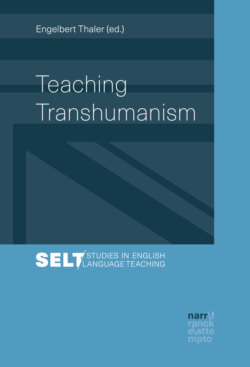Читать книгу Teaching Transhumanism - Группа авторов - Страница 32
На сайте Литреса книга снята с продажи.
5. Potential
ОглавлениеAll these teaching scenarios already hint at the benefits of this topic in TEFL. Trans- and posthumanism are themes of timeless topicality and existential relevance. Motifs such as the striving for immortality can be found in the Gilgamesh Epic and the historical search for the source of eternal youth. In addition, are there more important questions than “What is man?” and “What can/should/must/may he/she be?”?
These questions should also arouse intrinsic interest among our adolescent students. Technological future scenarios generally evoke excitement and creativity in our “digital native” learners.
Furthermore, there is no shortage of fascinating media and materials for a lively discussion of the usually very controversial transhumanist concepts – rather the agony of choice. By now, there are canonical literary texts, for which secondary sources are already available (e.g. Atwood’s Oryx and Crake, Ishiguro’s Never Let Me Go).
Finally, the discourse on transhumanism in the field of research methods could lead to a critical reflection on the empirical turn, which discriminates against hermeneutic-interpretive methods in favour of quantitative-statistical methods. Snaza/Weaver (2014: 2), for example, attack this “methodocentrism” – “the belief that particular, pre-formed methods can guarantee the validity of an intellectual investigation into the world by factoring out the vicissitudes of the observer’s entanglement with the world.” However, purely empirical methods do not do justice to the complexity of human relationships and learning processes – this “more-than-human world” (Ib.).
